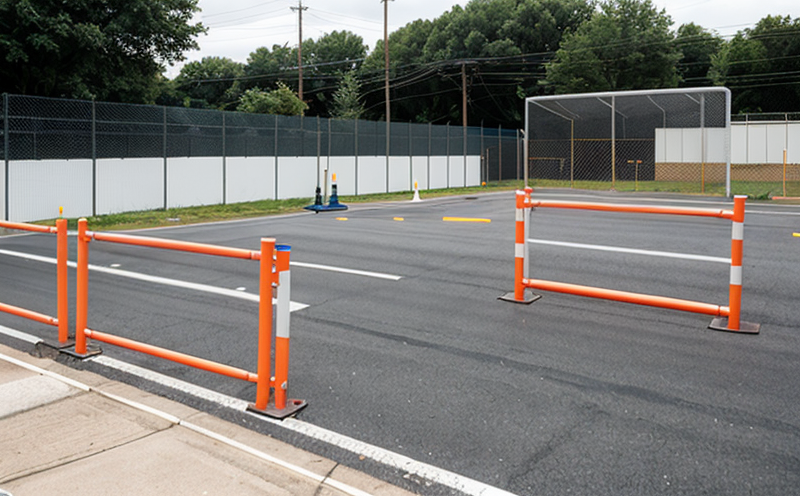EN 166 Protective Face Shields Impact Resistance Testing
The EN 166 standard is a European specification that outlines the requirements and test methods for protective face shields. This standard aims to ensure that the face shields provide adequate protection against various hazards, including impact from flying particles or objects. The testing procedure described in this section focuses specifically on assessing the impact resistance of these shields.
Impact resistance tests are crucial because they determine whether a face shield can protect individuals working in hazardous environments such as construction sites, manufacturing facilities, and other industrial settings where there is a risk of facial injury from impacts. By ensuring compliance with EN 166 standards, manufacturers and suppliers can guarantee that their products meet the necessary safety requirements for use.
The test involves subjecting the face shield to an impact force generated by a specified mass falling from a defined height onto the front surface of the shield. The objective is to measure how much deformation occurs during this impact while also checking if any fragments detach or break away from the main structure. Compliance with EN 166 means that even after such testing, there should be no significant reduction in optical quality or structural integrity.
In real-world applications, these protective face shields are often worn by workers who may encounter flying debris, liquids, or other potential hazards while performing their tasks. Therefore, it is essential to verify through rigorous testing that they offer reliable protection under all expected conditions of use. This ensures not only compliance with regulatory requirements but also enhances overall workplace safety.
For quality managers and compliance officers responsible for ensuring product safety standards are met across industries, understanding the specifics behind EN 166 testing provides valuable insights into selecting appropriate protective gear for employees. Additionally, R&D engineers involved in developing new materials or designs related to personal protection equipment (PPE) can benefit from knowing exactly what criteria need to be satisfied during certification processes.
When purchasing face shields intended for use within certain sectors like construction or manufacturing, specifying that they comply with EN 166 not only meets legal requirements but also demonstrates commitment to maintaining high levels of occupational safety among staff members. Procurement teams can leverage this knowledge when evaluating bids from different suppliers by asking questions about their certification status and testing protocols.
Applied Standards
| Standard Number | Description |
|---|---|
| EN 166-3:2015 | Test methods for impact resistance of protective face shields and visors. |
Why Choose This Test
- Ensures compliance with international safety standards.
- Guarantees robust performance against potential impacts.
- Provides confidence in the protective capabilities of face shields.
- Helps maintain regulatory requirements and industry best practices.
Quality and Reliability Assurance
The EN 166 test for impact resistance is part of a broader set of procedures designed to ensure the quality and reliability of protective face shields. These tests evaluate not only how well the product performs under ideal conditions but also how it behaves when subjected to real-world stressors.
By conducting thorough inspections before shipment, manufacturers can identify any defects or inconsistencies early in the production process. This proactive approach helps prevent subpar products from reaching end users and ensures consistent performance across batches.
In addition to physical testing, visual inspection plays a crucial role in maintaining standards. Skilled inspectors examine each face shield for signs of damage, wear, or improper assembly that could compromise its protective features. Through this combination of mechanical evaluation and manual assessment, laboratories can provide comprehensive quality assurance reports that reassure customers about the reliability of their purchased equipment.
Furthermore, regular calibration of testing equipment ensures accurate results and consistency throughout repeated tests. This continuous monitoring allows laboratories to maintain high levels of precision in their measurements, which is vital for demonstrating compliance with relevant standards like EN 166.
The commitment to quality extends beyond individual tests; it encompasses the entire lifecycle of a product from design through manufacturing up until final delivery. By adhering strictly to these protocols, laboratories play an integral part in safeguarding worker safety and promoting best practices within their respective industries.





